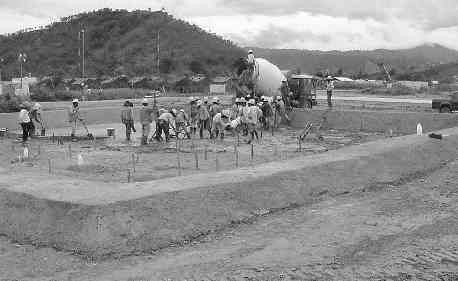Scientists Create Bendable Concrete That Can Resist Earthquakes

KEY POINTS
- Researchers have made a new concrete mix made entirely from waste products
- It doesn't need to be heated or produce as much CO2 as traditional concrete
- Instead of breaking, it only sustains hairline fractures in case of a natural disaster
Scientists at the Swinburne University of Technology, Melbourne have created a new process that will help create bendable concrete and prevent the collapse of buildings and other structures during an earthquake.
The material which scientists have prepared to replace traditional concrete is a mix of synthetic fibers and fly ash and unlike traditional concrete, it doesn’t need to be heated to create a mix. Because of its composition, the mix has a smaller carbon footprint than traditional concrete.
“Production of this novel concrete requires about 36 percent less energy and emits up to 76 percent less carbon dioxide as compared to conventional bendable concrete made of cement,” Dr. Behzad Nematollahi, who has created the product along with Professor Jay Sanjayan, stated in an official press release published on the University’s official website.
The fact that it doesn’t require to be heated to be produced also makes it much easier to manufacture. Since the new mix doesn’t need limestone to be heated, it will consume 36 percent less energy — it will also emit 76 percent less carbon dioxide.
The most important part of the concrete is the polymer fibers, which instead of breaking down in case of an earthquake will sustain minor hairline fractures. Dr. Nematollah claims that the concrete is 400 times more bendable than traditional concrete.
The fact that it uses industrial waste instead of cement makes it a win-win for environment-friendly construction. It reduces, hard to dispose of fly ash — which occurs as a by-product of coal. Concrete is widely used globally and produces 927 kg of carbon dioxide per ton. This composition can be used especially in areas prone to natural disasters such as hurricanes, earthquakes, and blasts.
While it is currently far from replacing traditional concrete, the researchers’ product has provided an alternative, that if deployed, will have definite advantages over traditional concrete.
© Copyright IBTimes 2025. All rights reserved.




















